Browse Primary Sources
Locate primary sources, including images, objects, media, and texts. Annotations by scholars contextualize sources.

Mahabodhi Temple
This photograph shows the Mahabodhi Temple complex. The temple is a part of Bodh Gaya a religious place in the Gaya District in Bihar that is one of the four and most important pilgrimages associated with the life of Gautama Buddha. It is said to have been the place where Buddha obtained enlightenment.
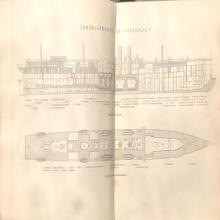
Ship Plan of a Late-19th Century Steamship
This ship plan from the late-19th century offers a partial view of spatial arrangements within a Messageries steamship. The diagram comes from a book of commercial publicity and imperial propaganda written by a Messageries ship-captain, Louis Tillier, and a famous journalist, novelist, and veteran of French colonial wars, Paul Bonnetain.
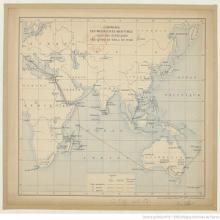
Shipping Company Route Map from 1889
This route-map of the Messageries Maritimes shipping company displays the main routes connecting metropolitan France to its empire in the Indo-Pacific. While the map dates to 1889, these routes retained their basic structure through the 1950s.
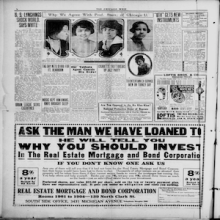
Newspaper Report on Pan-African Congress's Response to U.S. Lynchings
This November 19, 1921 article comes from The Chicago Whip, a Chicago-based newspaper founded by William C. Linton, an African American editor and publisher originally from Atlanta, Georgia. The paper frequently reported on racial inequality in the United States. This article in particular covers a speech Walter F.
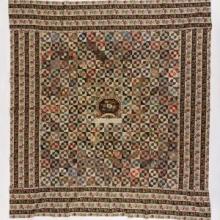
Quilted bedcover of Elisabeth Chapman
This quilted bed cover was likely made for the marriage of John and Elisabeth Chapman on September 19, 1829.
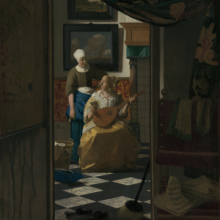
The Love Letter by Jan Vermeer
Painted in the last phase of his career, Dutch artist Jan Vermeer’s The Love Letter is a work of oil on canvas that depicts a wealthy woman holding a love letter, seemingly just delivered to her by the maid servant at her
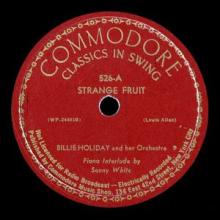
"Strange Fruit" by Billie Holiday (1939)
Based on a poem by Abel Meeropol published in January 1937, “Strange Fruit” was a song protesting the lynching of African Americans and was recorded by African American jazz singer Billie Holiday in 1939.
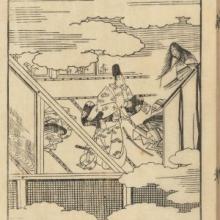
Yamamoto Shunshō’s The Tale of Genji
Largely considered the first novel, The Tale of Genji was written by Murasaki Shikibu, a noblewoman and lady-in-waiting during the early eleventh century.
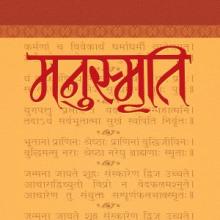
Laws of Manu
The Manu-smriti, or Laws of Manu, are of the most authoritative codes of Hinduism in India, dating back to approximately 100 C.E..
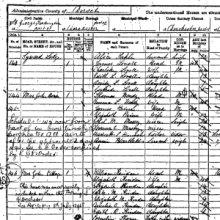
Census of England, 1891
The census of the United Kingdom was the tenth census and was taken on April 5, 1891.
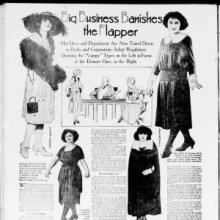
“Big Business Banishes the Flapper"
The “flapper” craze overtook the western world in the early 1920s and was spearheaded by young women intent on bucking cultural norms of the time.
Mandate for Palestine
The Mandate for Palestine was a legal document that established the United Kingdom as a Mandatory in charge of Palestine and Transjordan following its occupation of the territories during World War I and their eventual concession
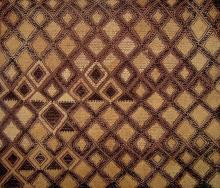
Kasai Velvet, Democratic Republic of the Congo
Despite its name, Kasai velvet, or velours du kasai, is not actually a velvet. Rather, it is embroidery on a finished piece of raffia cloth.

Tomoe Gozen
Tomoe Gozen was a Japanese female samurai that lived during the late twelfth century, or late Heian period, in Japan. Tomoe Gozen was known for her skill in archery and swordcraft.
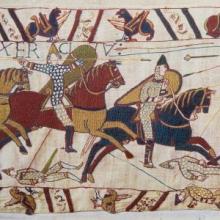
The Bayeux Tapestry
Most likely commissioned by Bishop Odo of Bayeux, the Bayeux Tapestry depicts William the Conqueror’s conquest of England, culminating in the Battle of Hastings.
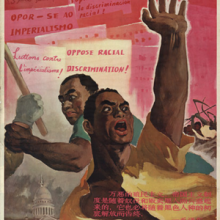
"Resolutely support the just struggle of the American Blacks!" Propaganda Poster, 1963
The title of this Chinese propaganda poster is “Resolutely support the just struggle of the American Blacks!” (Jianjue zhichi Meiguo heirende zhengyi douzheng!). Dated September 1963, the poster was designed by Chinese artist Cao Youcheng and published by the Shanghai People’s Fine Arts Publishing House.
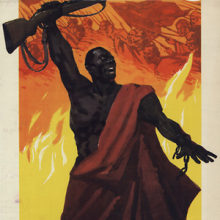
“Drive the old and new colonialists out of Africa!” Propaganda Poster, 1964
This Chinese propaganda poster, dated August 1964, was designed by Chinese painters Wang Datong and Du Yongqiao and published by the People’s Fine Arts Publishing House in Beijing. The poster’s text reads “Drive the old and new colonialists out of Africa!” (Ba xin lao zhimin zhuyi zhe ganchu Feizhou qu!).
Speech by U.S. Civil Rights Leader Robert Williams, 1966
American civil rights leader Robert Williams delivered this speech on August 8th,1966 at a demonstration in Beijing commemorating the third anniversary of Mao Tse-tung’s “Statement Supporting the American Negroes in Their Just Struggle Against Racial Discrimination by U.S.
Mao Tse-tung's Statement Regarding Racial Discrimination in the United States, 1963
Chinese Communist Party Chairman Mao Tse-tung delivered this speech on August 9th, 1963 prior to the March on Washington for Jobs and Freedom. In it, he expresses support for Black Americans’ struggles against racial discrimination and calls upon peoples of the world to unite against U.S. imperialism.
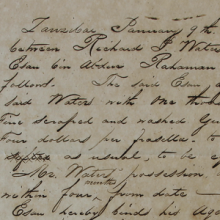
Business contract between Richard P. Waters and his Omani-Zanzibari trading partner, Esau bin Abdul Rahman
This contract represents how business was typically transacted in Zanzibar and throughout the Omani Empire. It reflects how merchants throughout the region relied upon forging deals with each other, but it also serves as a lens through which we can peer to see how this space allows us to see just how tightly connected the world was becoming. This contract stipulated that Richard P.